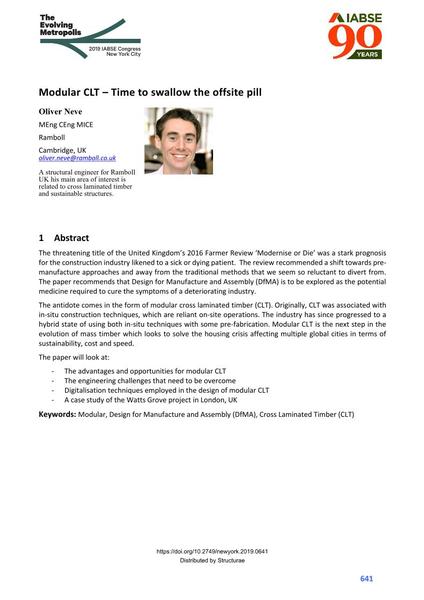Modular CLT – Time to swallow the offsite pill

|
|
|||||||||||
Bibliographic Details
| Author(s): |
Oliver Neve
(Ramboll)
|
||||
|---|---|---|---|---|---|
| Medium: | conference paper | ||||
| Language(s): | English | ||||
| Conference: | IABSE Congress: The Evolving Metropolis, New York, NY, USA, 4-6 September 2019 | ||||
| Published in: | The Evolving Metropolis | ||||
|
|||||
| Page(s): | 641-649 | ||||
| Total no. of pages: | 9 | ||||
| DOI: | 10.2749/newyork.2019.0641 | ||||
| Abstract: |
The threatening title of the United Kingdom’s 2016 Farmer Review ‘Modernise or Die’ was a stark prognosis for the construction industry likened to a sick or dying patient. The review recommended a shift towards pre- manufacture approaches and away from the traditional methods that we seem so reluctant to divert from. The paper recommends that Design for Manufacture and Assembly (DfMA) is to be explored as the potential medicine required to cure the symptoms of a deteriorating industry. The antidote comes in the form of modular cross laminated timber (CLT). Originally, CLT was associated with in-situ construction techniques, which are reliant on-site operations. The industry has since progressed to a hybrid state of using both in-situ techniques with some pre-fabrication. Modular CLT is the next step in the evolution of mass timber which looks to solve the housing crisis affecting multiple global cities in terms of sustainability, cost and speed. The paper will look at:
|
||||
| Keywords: |
cross laminated timber (CLT) CLT modular Design for Manufacture and Assembly (DfMA)
|
||||
